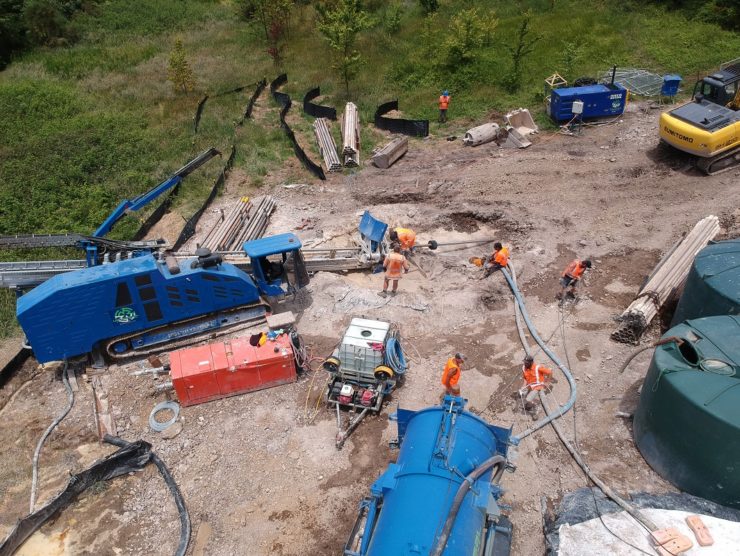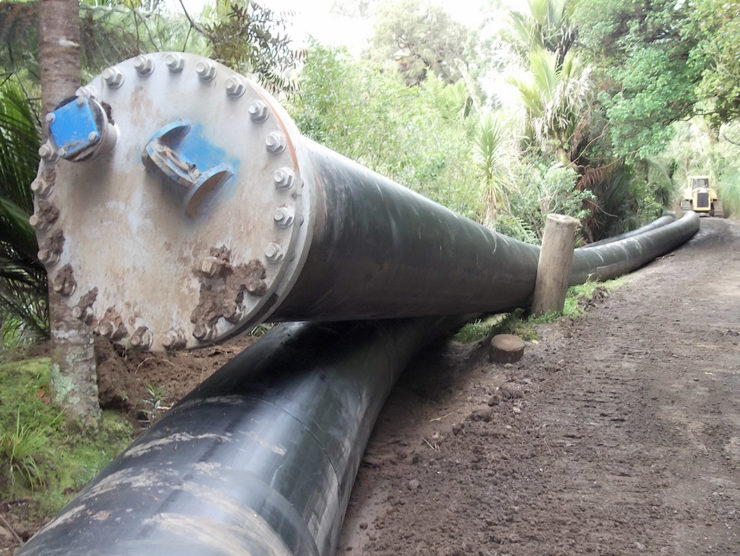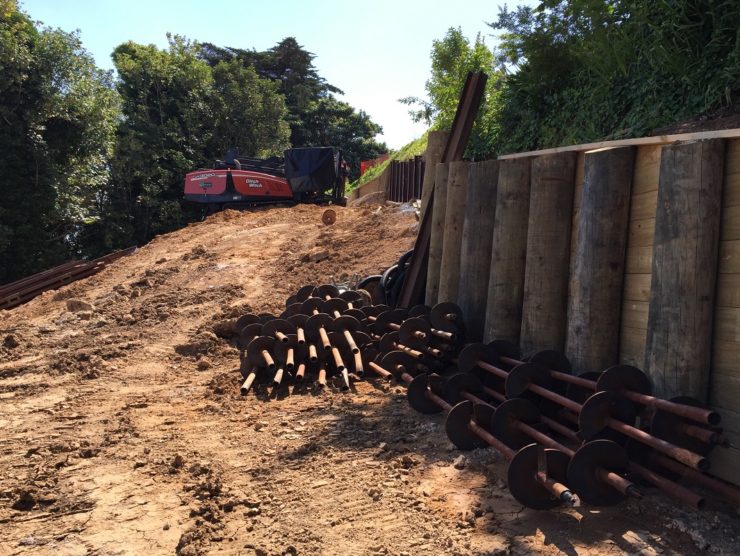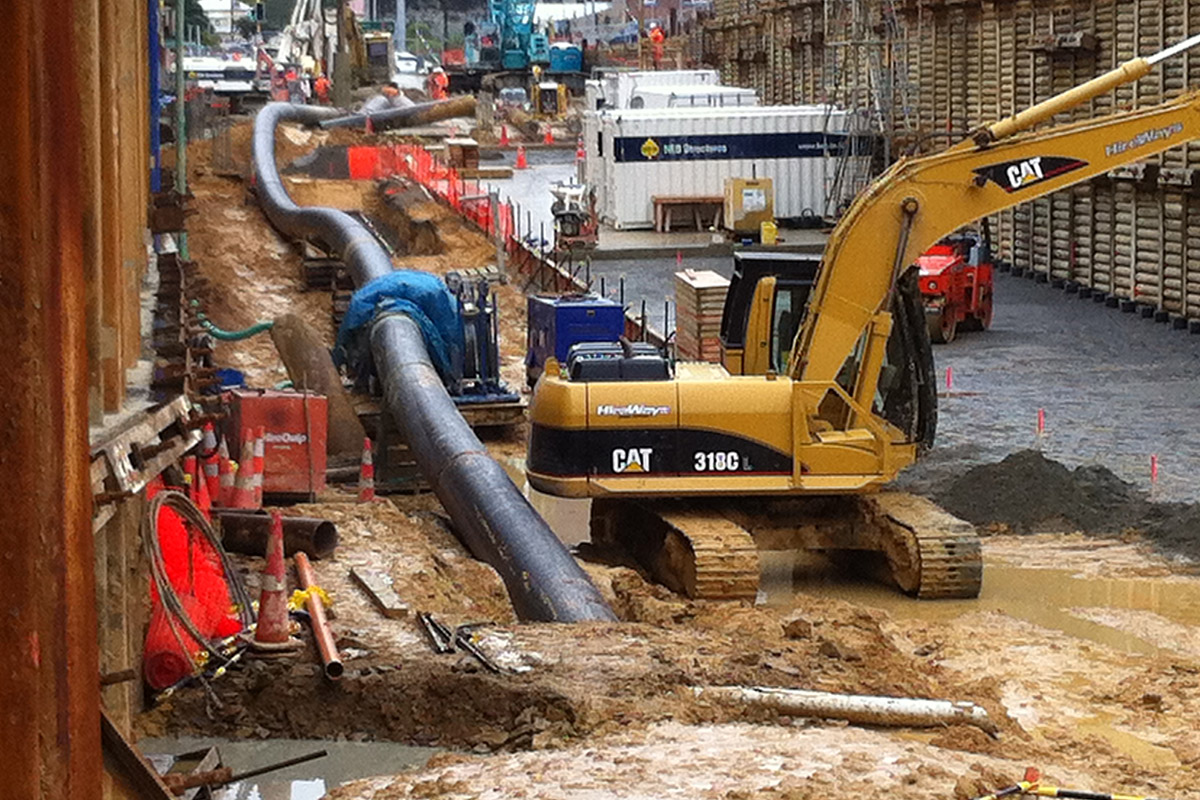
- Project Name Memorial Park Traffic Tunnel
- Client Memorial Park Alliance Team (NZTA)
- Date 2012
- Duration 7 weeks
- Location Wellington, New Zealand
Project Summery
The Memorial Park traffic tunnel project in Buckle Street, Wellington was in full swing to be completed by ANZAC day 2015. This date marks the 100 year anniversary of the Gallipoli campaign.
The project of “national importance” involves undergrounding the traffic on Buckle Street and building a memorial park in front of the National War Memorial where the unknown Soldier was laid to rest in 2004.
The project is twofold and achieves another step towards improving traffic flow to the airport through the Wellington CBD. Lowering Buckle Street by 9m created a low point in the cut and cover tunnel thereby creating a stormwater collection issue. So a gravity pipeline was required to connect the tunnel’s low point to the existing storm-water network at the top of Cambridge Terrace (next to the Basin Reserve). This was no easy task. To maintain a gradient the pipe needed to pass within centimetres under a brick arch sewer constructed 100 years ago and no one really knew its’ foundation construction details. The pipeline would also need to pass under SH1 at depth and then beneath an historic building before exiting in Cambridge Terrace. The ground conditions are variable and range from rock under Buckle Street to marine sediments in Cambridge Terrace. When the first European settlers arrived in Wellington around 1840 there was a shallow lagoon on the site that the Basin Reserve is now located, which was linked to the harbor by a stream following the route of what is today Kent and Cambridge Terrace. The colonists planned to turn the lagoon into an inland anchorage for the city. However, when New Zealand’s most powerful earthquake on record struck in 1855, the area was raised by two metres and the lagoon instead became a swamp. The ground conditions at this end of the drill shot were a real concern to the success of the project.
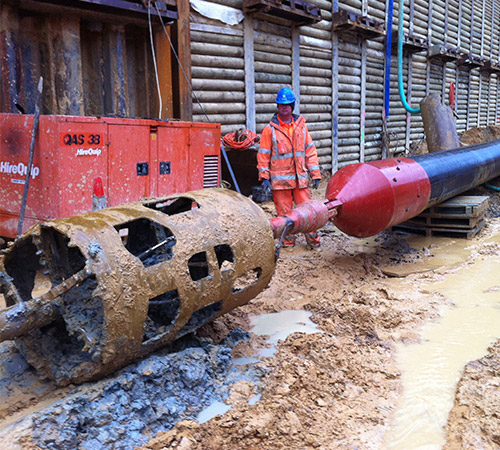
Project Mission
The pilot hole was the biggest challenge on this project because the ground conditions were so variable. “Tim Mitchell” the drill rig operator had never encountered such variable ground in one drill shot in his 30 years drilling experience. Traversing rock, sands, silts, clays, slop and maintaining tight grade tolerances is very difficult and requires careful judgment from years of experience. Variable ground is also difficult when choosing tooling because a rock reamer is very different to a clay reamer. Tripping in and out to change tooling wears the tunnel invert unevenly, so this was to be avoided at all costs.
The Drill rig was now re-located in the night to Cambridge Terrace and a back cutter (reamer) connected to the drill string. In order to reduce fluid consumption UUL’s mobile solids control fluid recycle plant was introduced to the system. The recycler reduces fluid consumption, fluid waste and drilling additives. This saves money and reduces impact on the environment.
As the hole opening proceeded the tunnel was up sized to 850mm diameter. The tunnel could not be reamed the full length because the ground conditions at Cambridge Terrace were so weak that the tunnel would not hold open. A carefully balanced fluid system was maintained for the duration of the hole opening.
In tandem with the tunnel opening operation the 710mm diameter, SDR 11 polyethylene pipe was delivered and welded into two 100m long pipe strings. Once welded and tested they were positioned ready to be pulled into the tunnel. The front end of one string was fitted with a steel towing cone and connected to the drill string.
The pipe was installed into the tunnel over a twelve hour period. This included stopping for four hours to weld the two pipes together and reaming the final 30m of tunnel in the collapsing ground.
On completion of the pipe installation a cement plug was pumped around the pipe at each end to control ground water tracking along the outside of the pipe. The pipeline was pressure tested, CCTV undertaken and handed over to the alliance.
This was a technically difficult project with an expectation of high accuracy in immensely variable ground conditions and tight working space. Due to the fast track construction, hundreds of workers and dozens of sub contractors compete for space to undertake their component of the work, this requiring a high level of time management and communication. A team approach by all involved contributed to the ultimate success of the storm water outlet pipe from the Memorial Park Tunnel in down town Wellington.

